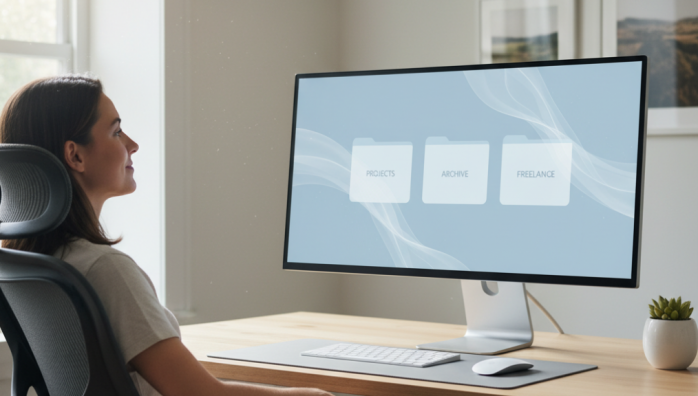Decluttering Your Digital Desktop Workspace
by admin in Productivity & Tools 10 - Last Update November 19, 2025

I have to be honest, for years my computer desktop was a digital manifestation of pure chaos. It was a graveyard of old project files, random screenshots, and a sea of icons I rarely clicked. Every time I minimized a window, I was met with a low-grade hum of anxiety. It felt less like a workspace and more like a digital junk drawer. I knew something had to change, not just for aesthetics, but for my own sanity and focus.
My turning point: the \'desktop as a workbench\' mindset
The real shift for me wasn\'t a new app or a complicated filing system. It was a simple mindset change: I started treating my desktop like a physical workbench. Think about it. A carpenter doesn\'t keep every tool they own and every piece of scrap wood on their bench at all times. The bench is reserved exclusively for the tools and materials needed for the project at hand. Everything else is stored away neatly. Once I applied this logic to my digital space, everything clicked.
The three-folder system I actually use
After trying and failing with hyper-specific, multi-level folder structures, I stripped my system down to the bare essentials. It felt counterintuitive at first, but this simplicity is precisely why it has stuck with me for over two years. My entire desktop now consists of just three folders.
Folder 1: Inbox
This is the landing zone. Every new file, every download, every quick note gets saved here. It’s a temporary holding pen. The critical rule I set for myself is that nothing lives in the Inbox permanently. Its sole purpose is to be a triage area, preventing new files from immediately cluttering the main desktop. It\'s the digital equivalent of a mail tray on a physical desk.
Folder 2: Active projects
Just like the workbench analogy, this folder holds only what I\'m currently, actively working on. Inside, I\'ll have a sub-folder for each distinct project (e.g., \'Q3 Report\', \'Website Redesign\'). When a project is finished, its folder is immediately moved out. This has been a game-changer for my focus. Opening this folder shows me my exact priorities, with no distractions from past or future work.
Folder 3: Archive
This is the long-term storage, the library. Once a project from the \'Active\' folder is complete, or an item from the \'Inbox\' is processed but needs to be saved, it moves here. Inside my Archive, I have a simple structure, usually organized by year and then by quarter or client. The key is that it\'s out of sight and out of mind, but still easily searchable when I need to find something from six months ago.
The weekly reset that makes it stick
A system is useless without a routine. Every Friday afternoon, I have a recurring 15-minute calendar event called \'Desktop Reset\'. During this time, I process everything in my \'Inbox\'—filing it into \'Active Projects\' or \'Archive\', or deleting it. I also move any completed project folders from \'Active\' to \'Archive\'. This non-negotiable ritual ensures my workbench is clean and ready for a focused start on Monday morning.
What about shortcuts and applications?
I\'m ruthless here. I keep zero file or folder shortcuts on my desktop. The only icons visible are my three main folders. For applications, I removed everything from my taskbar/dock except for the 3-4 apps I use every single day. For everything else, I rely on my operating system\'s built-in search (like Spotlight on Mac or the Start menu on Windows). It took a week to break the muscle memory of clicking an icon, but now it\'s second nature and my screen has never been cleaner. It\'s a small change, but it removed a surprising amount of visual noise from my day.














